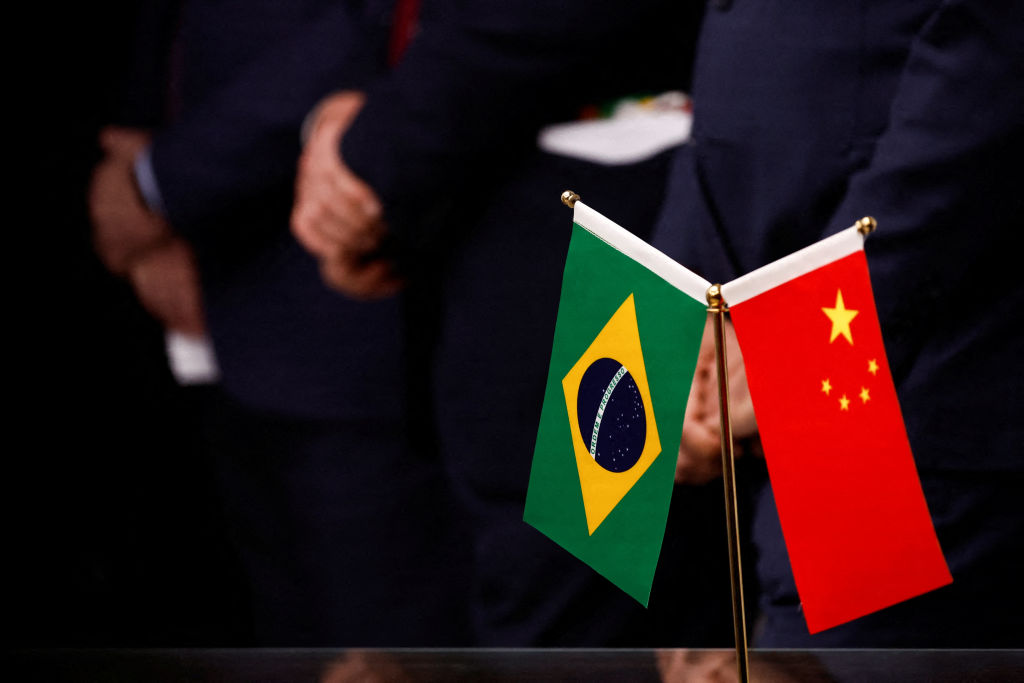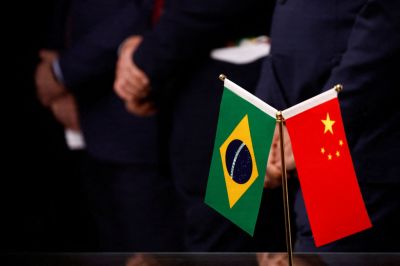Hawks in the U.S. were incensed as news broke last month that China has been using the island of Cuba to intercept American military and maritime data. Chinese involvement on the island, argued Rep. Mike Gallagher, reflects the emergence of a “Mao Doctrine” across the region.
The pun was a nod to the Monroe Doctrine—for 200 years the United States has considered the Latin American and Caribbean region (LAC) off-limits to foreign interference. But China’s outpost in Cuba is only the latest chapter in a long story of deepening ties and growing influence across the region.
What is China offering Latin America?
Since the end of the Cold War, China has emerged as an important trading and investment partner in Latin America. China’s trade with Latin American countries increased 26-fold from $12 billion to $315 billion between 2000 and 2021.
By the end of that period, the U.S. remained the region’s top trading partner—imports and exports with the United States totalled $680 billion as of 2020. But Beijing has grown more deliberate in its engagement in the last 15 years. At the same time, Latin American countries have sought distance from the United States in a bid for what some have called “active non-alignment”.
Brazil, for example—the region’s largest economy—is China’s largest trading partner and second largest debtor. President Lula da Silva’s state visit to China in April affirmed long-standing ties and underscored the Brazilian president’s ambition to distinguish his country as a global power.
China has now signed comprehensive strategic partnerships—the highest form of diplomatic partnership—with Brazil, Mexico, Argentina and four others in the region. In practice, such partnerships sustain vital strategic ties, particularly on energy and infrastructure. All of China’s 36 commercial loans to Argentina since 2007, for example, have been for transport, energy, or mining projects. Chinese companies are also heavily involved in lithium mining—central to the manufacturing of lithium ion batteries—and hydroelectric and solar energy production in numerous LAC countries.
Among the most significant trends has been the expansion of China’s massive Belt & Road Initiative to develop infrastructure: 21 of the region’s 33 states now receive funding under the scheme, which, until the Trump era, was confined to Africa and Eurasia.
How is Taiwan involved?
China’s growing diplomatic and economic ties make the region an asset in its efforts to isolate Taiwan on the world stage. Getting partners to publicly distance themselves from Taiwan is one way.
In March, Honduras formally cut ties with Taiwan and embraced the One China policy—which holds that Taiwan is not an independent nation but part of the People’s Republic of China. The move came as part of a grand rapprochement, including a new embassy in Beijing and six-day tour by the country’s president, Xiomara Castro.
Since 2000, China has extracted similar declarations from numerous other LAC countries including Panama, Costa Rica and El Salvador.
Only a handful of smaller states hold out, but “there’s no doubt that China could pretty much switch relations across the board,” says Chris Alden, a professor at the London School of Economics and author of a recent book on the topic.
“For small Latin American states, they know they need to be part of the Chinese market,” he tells The Dispatch.
“The Chinese market, China’s position in the Security Council: there are lots of points of pressure that China can bring to bear. The Taiwanese can’t really compete head to head in that power competition.”
What does China’s involvement in LAC mean for the U.S.?
Louisiana Republican Sen. Bill Cassidy has compared U.S.-China relations to the U.S.-Soviet Union relationship during the Cold War. The analogy may see appropriate at first glance, but it is a “misleading one,” Alden says.
“There was almost no contest during the Cold War,” he says. Except for Cuba, an ally of the Soviet Union, most LAC countries either weren’t aligned at all with the U.S. or the Soviet Union “or were right-wing dictatorships and therefore supportive of the United States.”
Experts seem to agree that China’s success today is more comprehensive and demands a more comprehensive response. “There’s a growing recognition in Washington that you need to have a competitive offer on the table,” argues Pepe Zhang, a Latin America expert at the Washington-based Atlantic Council.
Enter Cassidy and Sen. Michael Bennett, a Colorado Democrat. At an Atlantic Council event in June they announced the Americas Trade and Investment Act, a bill they hope will strengthen U.S. ties in the region.
“Now there is a bipartisan focus on investing in the Western Hemisphere to stay competitive with the Chinese Communist Party,” said Bennett in a memo.
The bill, still in committee, proposes expanding to Central America the United States-Mexico-Canada Agreement (USMCA)—the successor to NAFTA—and creating new partnerships throughout the region.
It also proposes the use of tax incentives to encourage U.S. firms to “friend-shore” in the region.
The U.S. will face challenges in the LAC competition with China. The United States lacks the ability to command the private sector, as China can. Nor can it so easily sway Latin American governments as it could during the Cold War.
The emergence of a more coherent U.S. approach to the region, though, will likely clip China’s rapid rise, especially as its own economy slows down. “What had been exclusively an economic relationship, one that could be done bilaterally, is going to have to take account of an active U.S.,” Alden tells The Dispatch.
“There’s going to be a push and pull that wasn’t there before.”






Please note that we at The Dispatch hold ourselves, our work, and our commenters to a higher standard than other places on the internet. We welcome comments that foster genuine debate or discussion—including comments critical of us or our work—but responses that include ad hominem attacks on fellow Dispatch members or are intended to stoke fear and anger may be moderated.
With your membership, you only have the ability to comment on The Morning Dispatch articles. Consider upgrading to join the conversation everywhere.